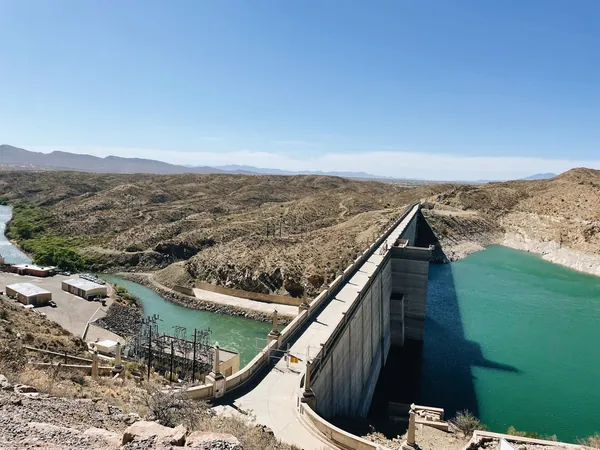
Scientists Discover How Desert Reservoirs Capture Carbon in Sediment During Droughts and Floods
2025-04-16
Author: Michael
The Unexpected Rise of Water in the Desert
In the scorching summer of 2021, while Americans celebrated Independence Day, three bold researchers found themselves knee-deep in a rising river delta in the New Mexican desert. Abby Eckland, Irina Overeem, and Brandee Carlson were on a mission in what remained of the drought-stricken Rio Grande.
Just as they were measuring water samples in the shallow channels, the river surged unexpectedly, transforming from a gentle flow to a muddy torrent, carrying debris and even dead fish in its wake. Instead of fleeing, the scientists saw this as an exciting opportunity for research.
Revolutionary Findings on Organic Carbon Sequestration
Fast forward to this month, and the team has published groundbreaking results in Water Resources Research, revealing how reservoirs like Elephant Butte can act as carbon sinks. Their study highlights that these vast bodies of water can trap organic carbon in sediment—especially during droughts and flash floods.
When the river's flow is accelerated by sediment loads, it creates an underwater current known as a hyperpycnal plume, pushing carbon-rich materials down to the reservoir's bottom layers. "Our data showed that this plume effectively delivers sediment and carbon to the depths where it becomes buried," Eckland stated.
A Partnership with Impact
Utilizing historical data from the U.S. Bureau of Reclamation, the researchers were able to trace carbon sequestration patterns over seasons and even decades. With Eckland's strong ties to federal scientists, this collaboration opened new doors, allowing for a comprehensive analysis of carbon dynamics in the region.
Droughts and Floods: A Double-Edged Sword
Remarkably, the study found that carbon burial rates increased during both droughts and flash floods. During droughts, water levels drop, reducing the reservoir's size and accelerating the deposition of carbon in sediment. Conversely, flash floods carry massive amounts of organic material, which, once pulled into the reservoir, also contributes to heightened carbon burial.
A Pioneering Discovery
While carbon burial in reservoir sediments has been observed before, this research pinpoints the underlying mechanics, connecting the dots between sediment dynamics and carbon storage. "The hyperpycnal plume plays a crucial role in this process," said Eckland.
Looking Ahead: Enhancing Water Management Strategies
The next phase involves further validating their findings. Overeem, alongside expert Marisa Repasch from the University of New Mexico, has returned to gather more samples from the reservoir bed. Early findings indicate even higher carbon numbers than initially predicted.
As scientists delve deeper, they hope their discoveries will empower water managers to make better-informed decisions, potentially redefining the role of dryland reservoirs as essential tools in combatting climate change by capturing greenhouse gases.









 Brasil (PT)
Brasil (PT)
 Canada (EN)
Canada (EN)
 Chile (ES)
Chile (ES)
 Česko (CS)
Česko (CS)
 대한민국 (KO)
대한민국 (KO)
 España (ES)
España (ES)
 France (FR)
France (FR)
 Hong Kong (EN)
Hong Kong (EN)
 Italia (IT)
Italia (IT)
 日本 (JA)
日本 (JA)
 Magyarország (HU)
Magyarország (HU)
 Norge (NO)
Norge (NO)
 Polska (PL)
Polska (PL)
 Schweiz (DE)
Schweiz (DE)
 Singapore (EN)
Singapore (EN)
 Sverige (SV)
Sverige (SV)
 Suomi (FI)
Suomi (FI)
 Türkiye (TR)
Türkiye (TR)
 الإمارات العربية المتحدة (AR)
الإمارات العربية المتحدة (AR)